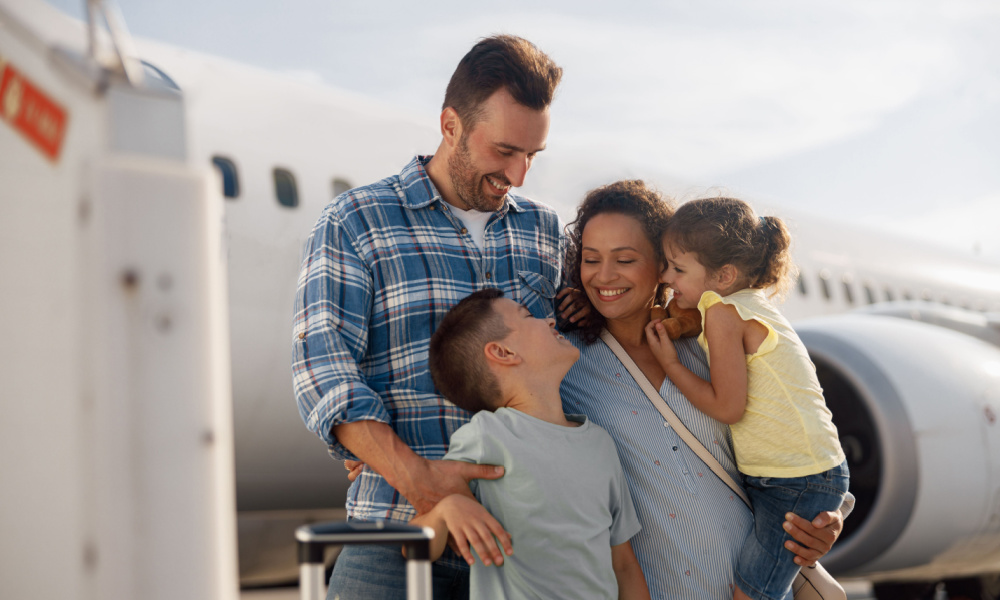Traveling can be an exhilarating experience, but for single parents, it often comes with the added challenge of managing their children’s nap times. Understanding how to manage naps while traveling is critical to ensuring a smooth and enjoyable journey for both parents and children. Whether you’re exploring a new city or visiting family, maintaining a semblance of your child’s nap routine can make all the difference.

Understanding Your Child’s Sleep Needs
Before delving into methods to manage naps while on the road, it is essential to understand your child’s unique sleep patterns and needs. Each child is different, and their sleep requirements can vary. Knowing how much sleep your child needs daily can help you plan naps accordingly, ensuring they remain well-rested throughout your travels.
Assessing Your Child’s Sleep Patterns
Take note of your child’s regular nap times and durations when at home. This information is invaluable when attempting to recreate a similar environment while traveling. Consistency is key, and by respecting their natural sleep rhythms, you can help minimize disruptions to their routine.
Planning Travel Around Nap Times
Travel planning is crucial for single parents aiming to maintain their child’s nap schedule. Whenever possible, arrange travel times to coincide with nap periods. This not only helps in keeping the child rested but also reduces stress for the parent.
Choosing the Right Flight Times
When booking flights, consider selecting those that align with your child’s napping routine. Midday flights often work well, allowing for a nap either during travel or shortly after arrival. For more tips on booking family-friendly flights, check out these guidelines.
Creating a Sleep-Friendly Environment
Creating a conducive sleep environment while traveling can significantly impact your child’s ability to nap. Simple adjustments can make unfamiliar settings feel more like home, promoting better rest.
Use Familiar Sleep Aids
Bringing along familiar items, such as a favorite blanket or stuffed animal, can provide comfort and a sense of security. These items can be particularly useful in unfamiliar hotel rooms or accommodations.
Controlling Light and Sound
Consider using travel-friendly blackout curtains or portable white noise machines to help create a soothing atmosphere. These tools can help mimic your child’s home sleep environment, making it easier for them to settle down.
Adjusting to New Time Zones
Traveling across time zones can disrupt a child’s sleep schedule, but with careful planning, the transition can be made smoother. Gradually adjust nap and bedtime in the days leading up to your trip to better align with the destination’s time zone.
Gradual Adjustments
Start by shifting nap times by 15-30 minutes each day leading up to your trip. This can help your child acclimate to the new time zone gradually, reducing the impact of jet lag.
Managing Naps on the Go
When constant movement is part of your travel itinerary, managing naps while on the go becomes essential. With a few strategic adjustments, you can ensure your child gets the rest they need without missing out on the travel experience.
Utilizing Travel Strollers and Carriers
Investing in a comfortable travel stroller or carrier can make a world of difference. These tools allow for naps on the move, providing your child with a cozy place to rest, whether you’re exploring a museum or strolling through a park. Check out travel activities that can accommodate nap times.
Flexible Itinerary Planning
When planning your travel itinerary, include downtime for naps. This might mean scheduling less in a day to allow for longer rest periods, ensuring your child remains refreshed and happy.
Nutrition and Hydration
Proper nutrition and hydration play a crucial role in maintaining energy levels and promoting better sleep. Ensure your child stays hydrated and maintains a balanced diet, even while traveling.
Snacks and Meals
Pack nutritious snacks and meals to keep your child satisfied and energized. Avoid sugary foods that can lead to energy spikes and crashes, disrupting sleep patterns.
Encouraging Relaxation and Calm
Encouraging relaxation before nap times can help ease your child into sleep. Simple routines, such as reading a book or listening to soothing music, can signal to your child that it’s time to wind down.
Incorporating Relaxation Techniques
Consider incorporating relaxation techniques, such as gentle breathing exercises or light stretching, to help your child relax before sleep.
Handling Nap Resistance
It’s not uncommon for children to resist naps, especially in new and exciting environments. Patience and persistence are key when dealing with nap resistance.
Dealing with Tantrums
Stay calm and consistent in your approach. Offer reassurance and maintain a routine to help your child feel secure and more likely to settle down for a nap.
Staying Flexible and Adaptable
Traveling with children requires a degree of flexibility. While maintaining a routine is important, being adaptable to changes and unexpected situations can make your journey more enjoyable for everyone involved.
Embracing the Unexpected
Be prepared for unexpected changes in plans, whether due to travel delays or other unforeseen circumstances. Keeping a positive attitude can help alleviate stress and create a more enjoyable experience.
Conclusion
Understanding how to manage naps while traveling is an invaluable skill for single parents. By planning around nap times, creating a sleep-friendly environment, and staying flexible, you can ensure your child remains well-rested and happy throughout your travels. For more expert advice on traveling with kids, visit this guide.

FAQ Section
Can I adjust my child’s nap schedule for travel?
Yes, gradually adjusting your child’s nap schedule in the days leading up to your trip can help them adapt to new time zones and travel itineraries.
What can I do if my child refuses to nap while traveling?
Maintaining a consistent routine, offering comfort items, and creating a soothing environment can help encourage napping during travel.
How can I keep my child entertained during travel?
Consider bringing along books, toys, or games that can be used during travel. For more ideas, explore family vacation itineraries.
This article contains affiliate links. We may earn a commission at no extra cost to you.




